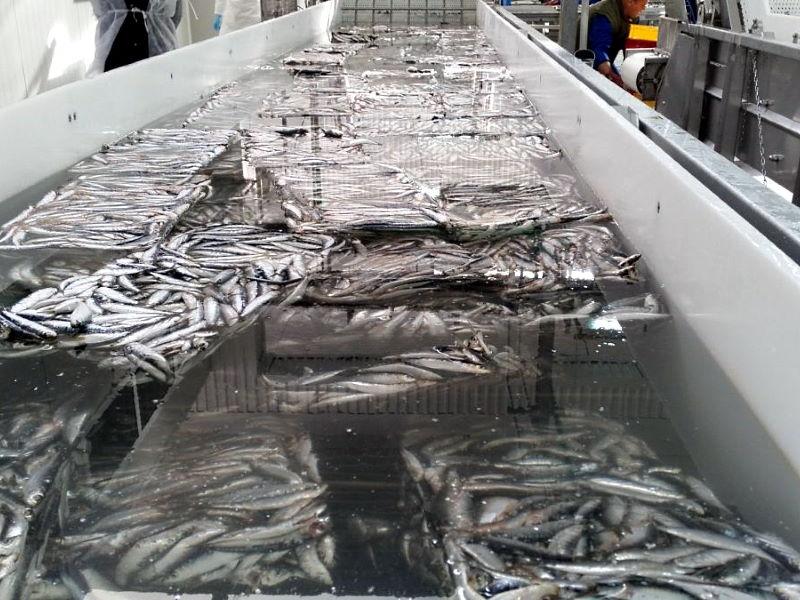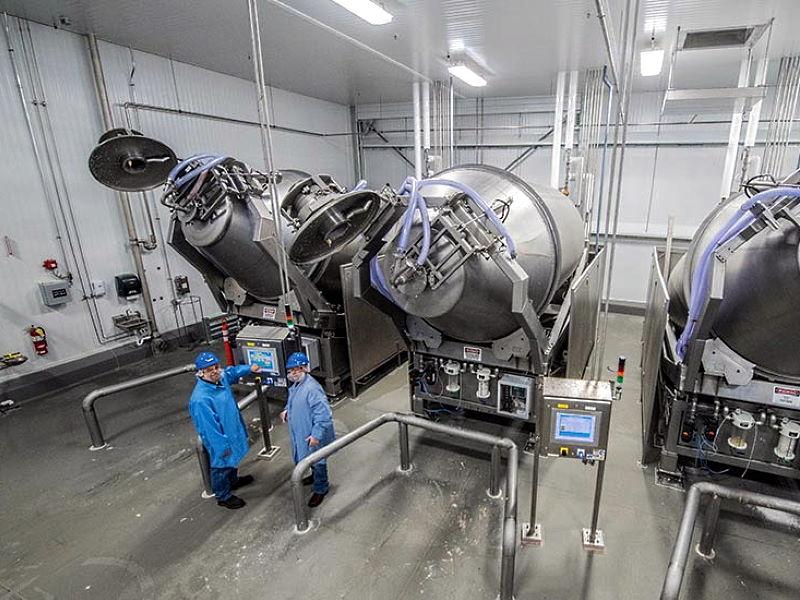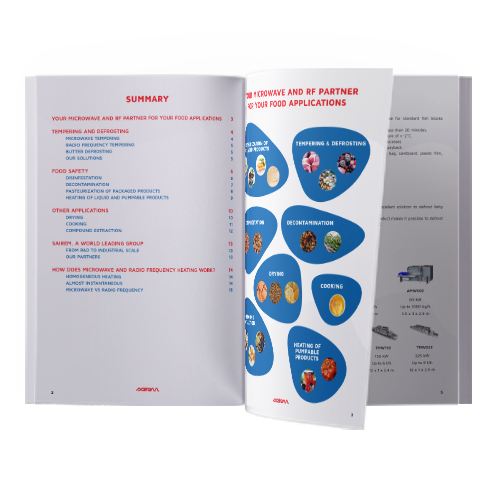What are the different food thawing technologies?
Before processing or cooking, most frozen foods need to be thawed in order to obtain a suitable result. Here are the most common defrosting methods and their advantages and drawbacks …
Cold room thawing
Thawing in a cold room is one of the most common methods. Frozen food is stored in a room at a temperature around 5 ° C with air circulation, until it slowly reaches room temperature.
However, this simple solution has several drawbacks: the defrosting time can last up to 48 hours, the result is not always homogeneous, but above all significant food driplosses occur.

Cold water thawing
This method is faster than defrosting in a cold room, but requires more care. Food should be in an airtight package or plastic bag. If the bag leaks, bacteria in the water can contaminate the food. In addition, the meat tissue can absorb water resulting in a watery product.
Relatively efficient for defrosting whole fish, this method is not well suited for other foods.

Tumbling thawing
Tumbling thawing involves a rotating drum whose walls are slightly heated. On some cases, cold steam under vacuum is added to improve the process. This solution is faster than cold room defrosting as it takes hours instead of days.
But this process is not continuous, which is not really suitable for processing of large amount of food and not adapted at all for delicate products like fruits and vegetables.

Open air thawing
Although still used in some places, open air thawing is prohibited in many countries. This is because this method is faster than thawing in a cold room, but the surface of the food can reach temperatures where bacteria grow rapidly, making the food unsafe for consumption, even after cooking.
In addition, significant driploss occur with this solution. It is therefore a method to be totally avoided.

Microwave thawing
The microwave and radio frequency have the property to thaw the entire mass of a product quickly and homogeneously. Unlike other solutions, where heat is transferred by conduction from the surface of the food to its core, the waves goes through the entire food block. It is called « volumetric heating ». The speed of the process prevents drip-loss or bacterial growth.
The defrosting by microwave or radio frequency takes from 3 to 20 minutes instead of hours or days with traditional methods, even for large food blocks. This technology is adapted even for sensitive products like fruits and vegetables.
Contact us

Need help to find the best solution ?
Our free microwave and radio-frequency guide for food applications will help you to better understand these technologies, and find the solution the most adapted to your needs.
Download your guide